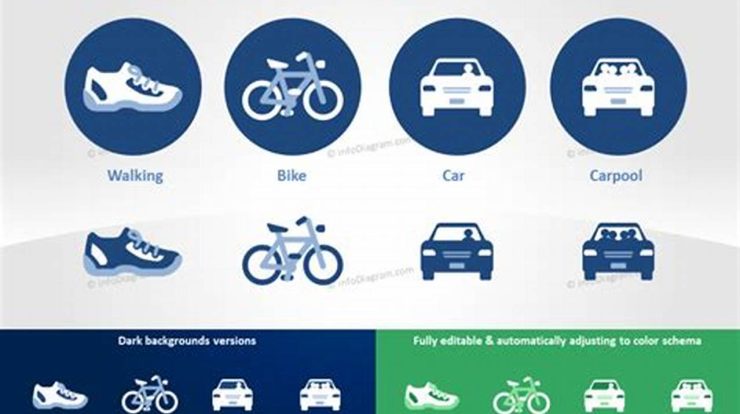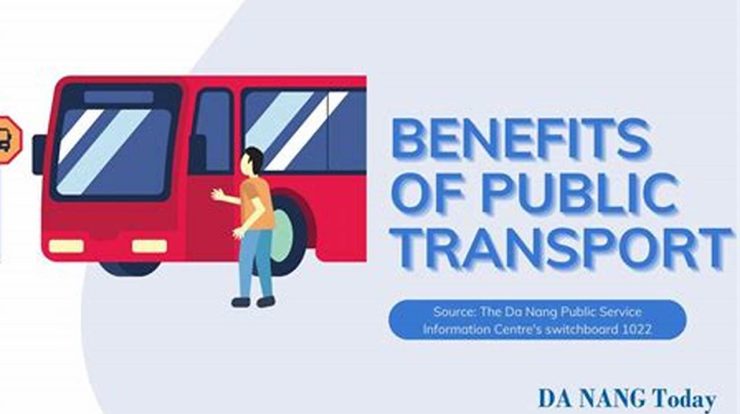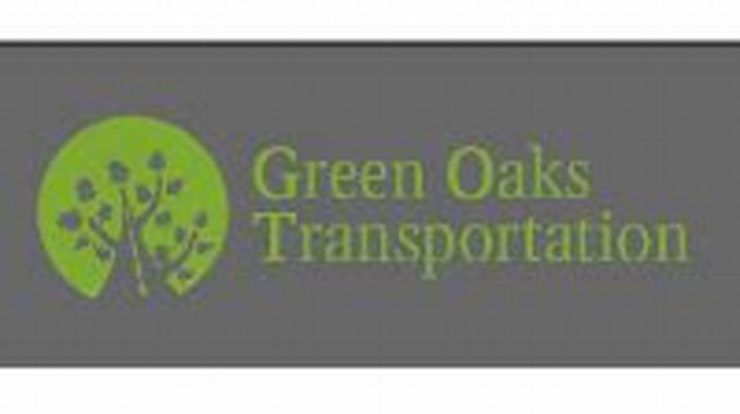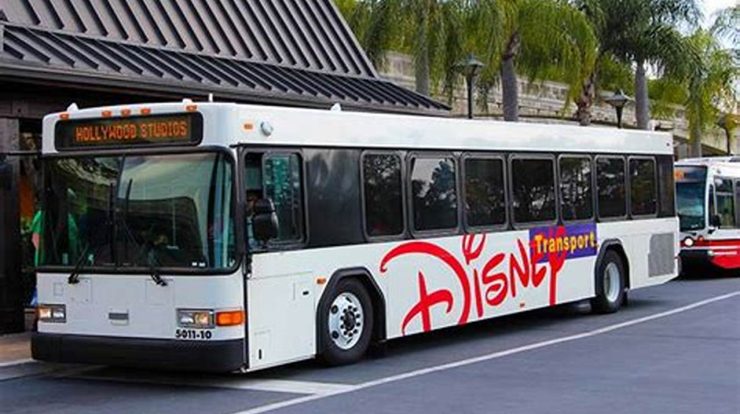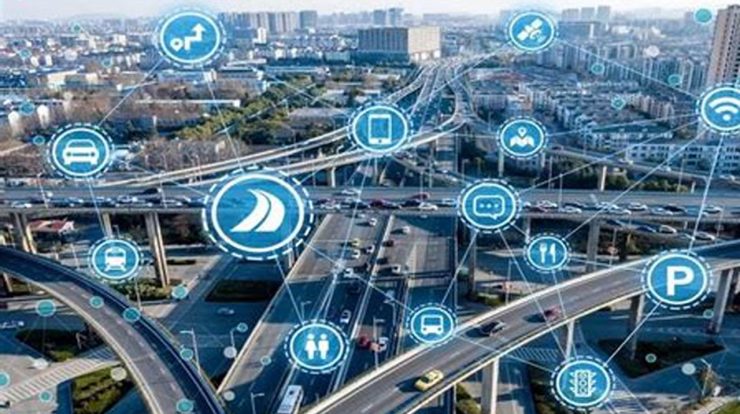Table of Contents
How does public transportation benefit the environment? Public transportation plays a crucial role in reducing environmental pollution and promoting sustainability. It offers numerous advantages over private vehicles, making it an eco-friendly and efficient mode of transportation.
Editor’s Note: This article explores the environmental benefits of public transportation, highlighting its positive impact on air quality, carbon emissions, and natural resource conservation. Understanding these benefits is essential for promoting sustainable transportation practices and protecting our planet.
Our team has conducted thorough research and analysis to compile this comprehensive guide on public transportation’s environmental benefits. We aim to provide valuable insights that will help individuals make informed decisions about their transportation choices.
Key Takeaways:
| Benefit | Impact |
|---|---|
| Reduced Air Pollution | Fewer vehicles on the road means lower emissions of harmful pollutants like carbon monoxide, nitrogen oxides, and particulate matter. |
| Lower Carbon Emissions | Public transportation promotes energy efficiency by reducing the number of vehicles on the road, resulting in decreased greenhouse gas emissions. |
| Natural Resource Conservation | Less reliance on private vehicles reduces demand for fossil fuels and conserves natural resources such as oil and gas. |
Main Article Topics:
- Air Quality Improvements
- Carbon Emission Reductions
- Natural Resource Conservation
- Sustainability and Public Transportation
Public Transportation Benefits
Public transportation offers significant environmental benefits, contributing to a cleaner and more sustainable planet. Here are 8 key aspects to consider:
- Reduced air pollution
- Lower carbon emissions
- Energy efficiency
- Natural resource conservation
- Improved public health
- Reduced traffic congestion
- Enhanced urban livability
- Economic benefits
These aspects are interconnected and contribute to the overall positive impact of public transportation on the environment. For example, reduced air pollution and lower carbon emissions lead to improved public health, while reduced traffic congestion and enhanced urban livability make cities more pleasant and sustainable places to live. Public transportation also promotes economic benefits by reducing household transportation costs and stimulating local businesses.
Reduced air pollution
Reduced air pollution is a critical component of public transportation benefits environment. Public transportation systems, such as buses and trains, emit significantly lower levels of air pollutants compared to private vehicles. This is because public transportation vehicles are often powered by electricity or cleaner-burning fuels, and they carry multiple passengers, reducing the number of vehicles on the road.
Air pollution has several adverse effects on human health and the environment. Pollutants like particulate matter, nitrogen oxides, and carbon monoxide can cause respiratory problems, cardiovascular disease, and even cancer. Air pollution also contributes to climate change and damages ecosystems.
By reducing air pollution, public transportation helps improve public health and protect the environment. Studies have shown that areas with better public transportation systems have lower rates of respiratory and cardiovascular disease. Public transportation also helps reduce greenhouse gas emissions, which contribute to climate change.
Here is a table summarizing the key benefits of reduced air pollution from public transportation:
| Benefit | Impact |
|---|---|
| Improved public health | Reduces respiratory and cardiovascular disease, as well as cancer risk |
| Environmental protection | Reduces greenhouse gas emissions and protects ecosystems |
| Economic benefits | Reduces healthcare costs and improves worker productivity |
Promoting public transportation and reducing air pollution are essential steps toward creating a more sustainable and livable future. By investing in public transportation, governments and communities can improve air quality, protect public health, and reduce greenhouse gas emissions.
Lower carbon emissions
Lower carbon emissions are a critical component of public transportation benefits environment. Public transportation systems, such as buses and trains, emit significantly lower levels of greenhouse gases compared to private vehicles. This is because public transportation vehicles are often powered by electricity or cleaner-burning fuels, and they carry multiple passengers, reducing the number of vehicles on the road.
-
Reduced greenhouse gas emissions
Public transportation helps reduce greenhouse gas emissions, which contribute to climate change. By taking public transportation, individuals can reduce their carbon footprint and help mitigate the effects of climate change.
-
Improved air quality
Lower carbon emissions from public transportation also lead to improved air quality. Greenhouse gases, such as carbon dioxide and methane, can contribute to air pollution and respiratory problems. By reducing greenhouse gas emissions, public transportation helps improve air quality and protect public health.
-
Energy efficiency
Public transportation is more energy efficient than private vehicles. This is because public transportation vehicles can carry more passengers per trip, reducing the amount of energy needed to transport people.
-
Economic benefits
Lower carbon emissions from public transportation can also lead to economic benefits. By reducing greenhouse gas emissions, public transportation helps mitigate the effects of climate change, which can have significant economic costs.
Overall, lower carbon emissions are a key environmental benefit of public transportation. By promoting public transportation and reducing carbon emissions, governments and communities can improve air quality, protect public health, and mitigate the effects of climate change.
Energy efficiency
Energy efficiency is a critical component of public transportation benefits environment. Public transportation systems, such as buses and trains, are more energy efficient than private vehicles. This is because public transportation vehicles can carry more passengers per trip, reducing the amount of energy needed to transport people.
-
Reduced energy consumption
Public transportation uses less energy than private vehicles. This is because public transportation vehicles are more efficient at carrying passengers. For example, a bus can carry more passengers than a car, and a train can carry more passengers than a bus. This means that public transportation uses less energy to transport the same number of people.
-
Lower greenhouse gas emissions
Public transportation produces lower greenhouse gas emissions than private vehicles. This is because public transportation vehicles are often powered by electricity or cleaner-burning fuels. Additionally, public transportation reduces the number of vehicles on the road, which helps to reduce traffic congestion and improve air quality.
-
Improved air quality
Public transportation can help to improve air quality by reducing the number of vehicles on the road. This can help to reduce air pollution, which can have a number of benefits for public health, including reducing the risk of respiratory and cardiovascular disease.
-
Economic benefits
Public transportation can provide economic benefits by reducing energy consumption and greenhouse gas emissions. This can help to reduce the cost of transportation for individuals and businesses, and it can also help to reduce the overall environmental impact of transportation.
Overall, energy efficiency is a key environmental benefit of public transportation. By promoting public transportation and reducing energy consumption, governments and communities can improve air quality, protect public health, and reduce greenhouse gas emissions.
Natural resource conservation
Natural resource conservation is another important public transportation benefits environment. Public transportation helps conserve natural resources by reducing the need for private vehicles. This means that less fuel is consumed, which reduces greenhouse gas emissions and helps protect the environment.
-
Reduced fuel consumption
Public transportation can help to reduce fuel consumption by providing an alternative to driving. When people take public transportation, they don’t have to use their own cars, which reduces the amount of fuel that is consumed. This can help to reduce air pollution and greenhouse gas emissions.
-
Reduced greenhouse gas emissions
Public transportation can also help to reduce greenhouse gas emissions. When people take public transportation, they are not using their own cars, which means that they are not producing greenhouse gases. This can help to reduce the overall impact of transportation on the environment.
-
Protection of natural resources
Public transportation can help to protect natural resources by reducing the need for new roads and parking lots. When people take public transportation, they don’t need to build new roads or parking lots, which can help to preserve natural resources.
-
Improved air quality
Public transportation can also help to improve air quality. When people take public transportation, they are not using their own cars, which means that they are not producing air pollution. This can help to improve the air quality in cities and towns.
Overall, natural resource conservation is an important environmental benefit of public transportation. By reducing the need for private vehicles, public transportation can help to conserve natural resources, reduce greenhouse gas emissions, and improve air quality.
Improved public health
Improved public health is a critical component of public transportation benefits environment. Public transportation systems, such as buses and trains, can improve public health by reducing air pollution, increasing physical activity, and reducing stress.
-
Reduced air pollution
Public transportation can help to reduce air pollution by providing an alternative to driving. When people take public transportation, they are not using their own cars, which reduces the amount of air pollution that is produced. Air pollution can cause a number of health problems, including respiratory and cardiovascular disease. Reducing air pollution can help to improve public health and reduce the number of people who suffer from these diseases.
-
Increased physical activity
Public transportation can also help to increase physical activity. When people take public transportation, they often have to walk or bike to get to the bus stop or train station. This can help to increase their daily physical activity levels. Physical activity is important for maintaining a healthy weight, reducing the risk of chronic diseases, and improving mental health.
-
Reduced stress
Public transportation can also help to reduce stress. When people drive, they often have to deal with traffic congestion, road rage, and other stressors. Public transportation can provide a more relaxing and stress-free way to travel. This can help to improve mental health and well-being.
Overall, improved public health is an important environmental benefit of public transportation. By reducing air pollution, increasing physical activity, and reducing stress, public transportation can help to improve the health of individuals and communities.
| Benefit | Impact |
|---|---|
| Reduced air pollution | Improves respiratory and cardiovascular health |
| Increased physical activity | Reduces the risk of chronic diseases and improves mental health |
| Reduced stress | Improves mental health and well-being |
Reduced traffic congestion
Reduced traffic congestion is a significant public transportation benefits environment. Traffic congestion is a major problem in many cities around the world. It can cause delays, air pollution, and stress. Public transportation can help to reduce traffic congestion by providing an alternative to driving. When people take public transportation, they don’t have to drive their own cars, which reduces the number of vehicles on the road.
There are a number of benefits to reducing traffic congestion. First, it can save time. When there is less traffic on the road, people can get to their destinations more quickly. Second, it can improve air quality. When there are fewer cars on the road, there is less air pollution. Third, it can reduce stress. When people don’t have to sit in traffic, they are less stressed.
Public transportation is not the only solution to traffic congestion, but it is an important part of the solution. By providing an alternative to driving, public transportation can help to reduce traffic congestion and improve the quality of life in cities.
Here is a table summarizing the key benefits of reduced traffic congestion:
| Benefit | Impact |
|---|---|
| Reduced travel time | People can get to their destinations more quickly. |
| Improved air quality | There is less air pollution when there are fewer cars on the road. |
| Reduced stress | People are less stressed when they don’t have to sit in traffic. |
Enhanced urban livability
Enhanced urban livability is a key component of public transportation benefits environment. Public transportation systems, such as buses and trains, can help to create more livable cities by reducing traffic congestion, improving air quality, and increasing accessibility.
-
Reduced traffic congestion
Public transportation can help to reduce traffic congestion by providing an alternative to driving. When people take public transportation, they don’t have to drive their own cars, which reduces the number of vehicles on the road. This can lead to shorter commute times, less air pollution, and a more pleasant urban environment.
-
Improved air quality
Public transportation can also help to improve air quality by reducing the number of vehicles on the road. When there are fewer cars on the road, there is less air pollution. This can lead to improved public health, reduced healthcare costs, and a more sustainable environment.
-
Increased accessibility
Public transportation can also increase accessibility by providing a way for people to get around who do not have access to a car. This can include people who are young, old, disabled, or low-income. Public transportation can help to connect people to jobs, education, healthcare, and other essential services.
-
Enhanced community
Public transportation can also help to enhance community by bringing people together. When people take public transportation, they have the opportunity to interact with others from all walks of life. This can help to build social cohesion and create a more vibrant and inclusive community.
Overall, enhanced urban livability is a key public transportation benefits environment. By reducing traffic congestion, improving air quality, increasing accessibility, and enhancing community, public transportation can help to create more livable and sustainable cities.
Economic benefits
Public transportation provides numerous economic benefits that contribute to a more sustainable and prosperous society. Here are several key facets to consider.
-
Reduced household transportation costs
Public transportation offers a cost-effective alternative to private vehicle ownership and operation. By utilizing public transportation, individuals and families can save significant amounts of money on fuel, insurance, maintenance, and parking.
-
Increased business productivity
Efficient public transportation systems enhance accessibility to workplaces, allowing employees to commute more reliably and spend less time in traffic. This increased productivity contributes to economic growth and competitiveness.
-
Stimulation of local businesses
Public transportation hubs and routes often attract businesses and development, creating vibrant commercial areas. Improved access to public transportation supports local businesses by increasing customer foot traffic and employee availability.
-
Enhanced property values
Properties located near accessible public transportation stations or lines tend to have higher property values. This is due to the increased convenience, accessibility, and desirability of these locations.
These economic benefits of public transportation contribute to a more prosperous and sustainable society. By reducing household expenses, increasing business productivity, stimulating local economies, and enhancing property values, public transportation plays a vital role in fostering economic well-being and growth.
Public Transportation Benefits Environment FAQs
This section addresses frequently asked questions about the environmental benefits of public transportation, providing concise and informative answers.
Question 1: How does public transportation reduce air pollution?
Public transportation systems emit fewer pollutants than private vehicles, as they often use cleaner fuels and carry multiple passengers, reducing the number of vehicles on the road.
Question 2: What are the climate change benefits of public transportation?
Public transportation reduces greenhouse gas emissions by promoting energy efficiency and reducing the reliance on fossil fuels.
Question 3: How does public transportation conserve natural resources?
Public transportation reduces the demand for private vehicles, conserving fossil fuels and other resources used in vehicle manufacturing and maintenance.
Question 4: What are the health benefits of using public transportation?
Public transportation promotes physical activity, reduces stress, and improves air quality, leading to better overall health.
Question 5: How does public transportation contribute to sustainable urban development?
Public transportation reduces traffic congestion, improves air quality, and enhances accessibility, creating more livable and sustainable cities.
Question 6: What are the economic benefits of public transportation for individuals and society?
Public transportation reduces household transportation costs, increases business productivity, stimulates local economies, and enhances property values, contributing to economic prosperity.
In summary, public transportation offers numerous environmental benefits, including reduced air pollution, climate change mitigation, natural resource conservation, improved public health, sustainable urban development, and economic advantages. Embracing public transportation is crucial for creating a more sustainable and livable future.
Transition to the next article section:
To further explore the multifaceted benefits of public transportation, let’s delve into its positive impact on urban planning and community well-being.
Public Transportation Benefits Environment
Adopting public transportation is a smart choice for both environmental and economic reasons. Here are some tips to help you maximize the environmental benefits of public transportation:
Tip 1: Choose public transportation over private vehicles
Whenever possible, opt for public transportation instead of driving your own car. This simple switch can significantly reduce your carbon footprint and contribute to cleaner air.
Tip 2: Use public transportation for short trips
Even for short distances, consider taking public transportation instead of driving. This is especially effective in urban areas where traffic congestion is common. Walking or biking for short trips is also a great way to reduce your environmental impact.
Tip 3: Advocate for better public transportation options
Contact your local representatives and advocate for improved public transportation infrastructure and services. This could include expanding bus and train routes, increasing frequency, or implementing dedicated bus lanes.
Tip 4: Encourage others to use public transportation
Spread the word about the benefits of public transportation to your friends, family, and colleagues. Encourage them to join you in using public transportation, and share your positive experiences with them.
Tip 5: Support businesses that promote public transportation
Patronize businesses that are located near public transportation hubs or offer incentives for employees who use public transportation. This shows businesses that there is demand for public transportation-friendly policies.
Summary of key takeaways or benefits:
- Reduced air pollution
- Lower greenhouse gas emissions
- Improved public health
- Reduced traffic congestion
- Enhanced urban livability
By following these tips, you can maximize the environmental benefits of public transportation and contribute to a cleaner, healthier, and more sustainable future.
Transition to the article’s conclusion:
Embracing public transportation is a smart and responsible choice that benefits both the environment and our communities. By incorporating these tips into your daily routine, you can help create a more sustainable transportation system for everyone.
Public Transportation
This exploration of “public transportation benefits environment” has illuminated the multifaceted positive impact of public transportation on our planet. From reducing air pollution and mitigating climate change to conserving natural resources and promoting public health, public transportation offers a sustainable solution to the environmental challenges we face.
Embracing public transportation is not merely a choice but a necessity for a sustainable future. By prioritizing public transportation infrastructure, encouraging its use, and advocating for its expansion, we can collectively create a transportation system that is environmentally responsible, economically viable, and socially equitable. The benefits of public transportation extend far beyond reducing traffic congestion and improving air quality; they contribute to the well-being of our communities and the preservation of our planet.
Youtube Video:




